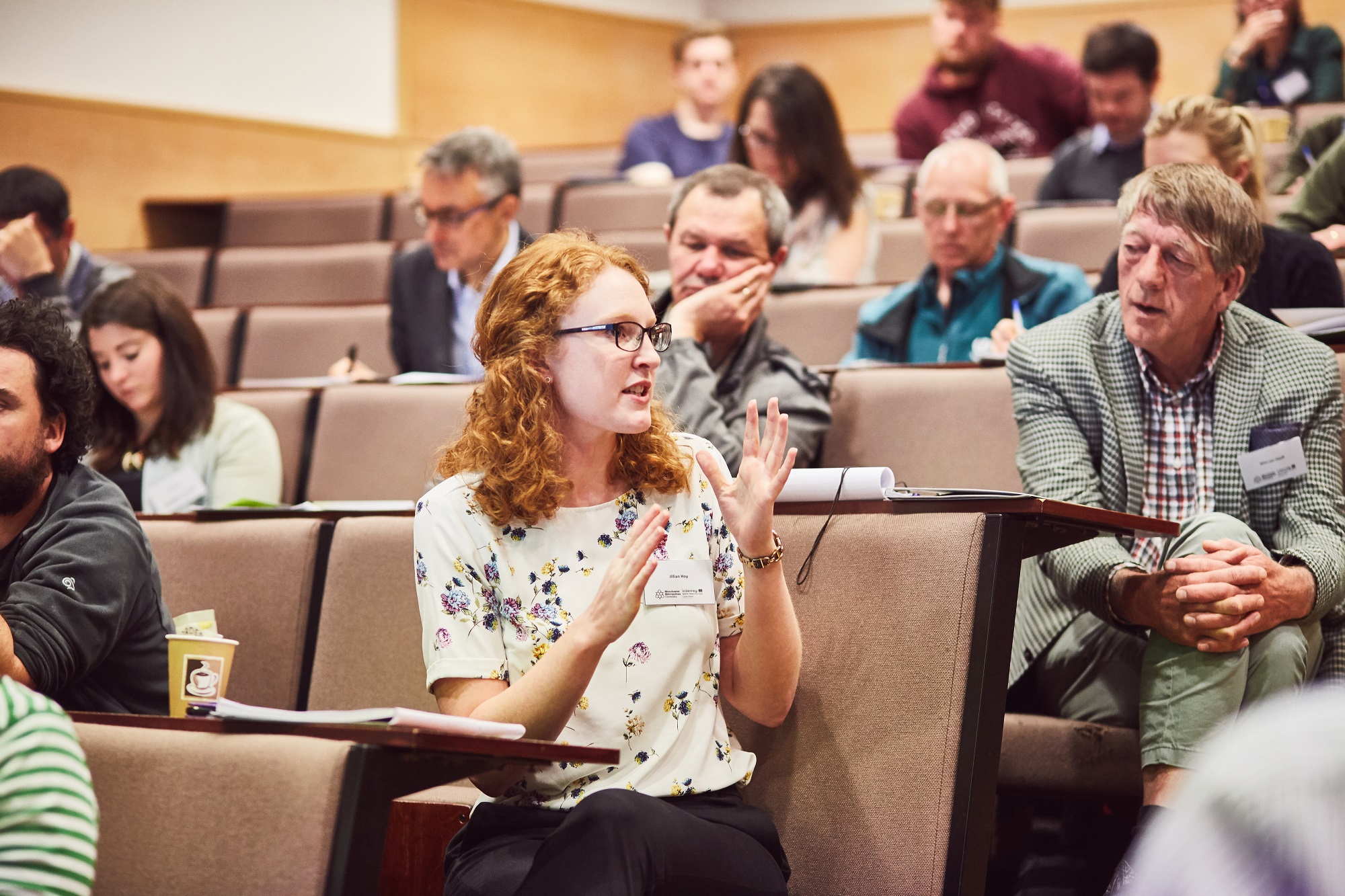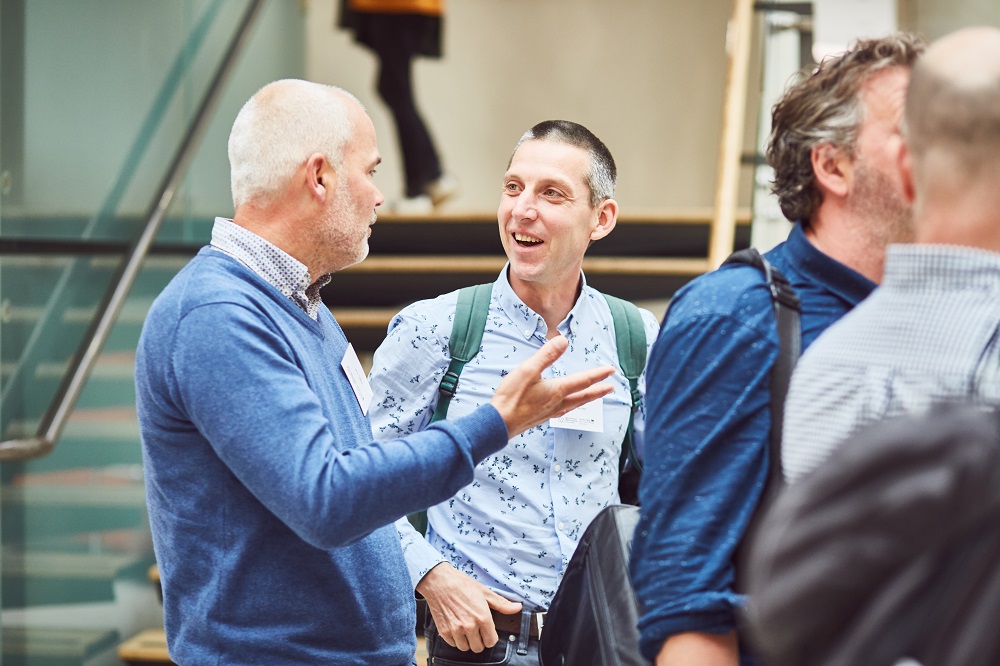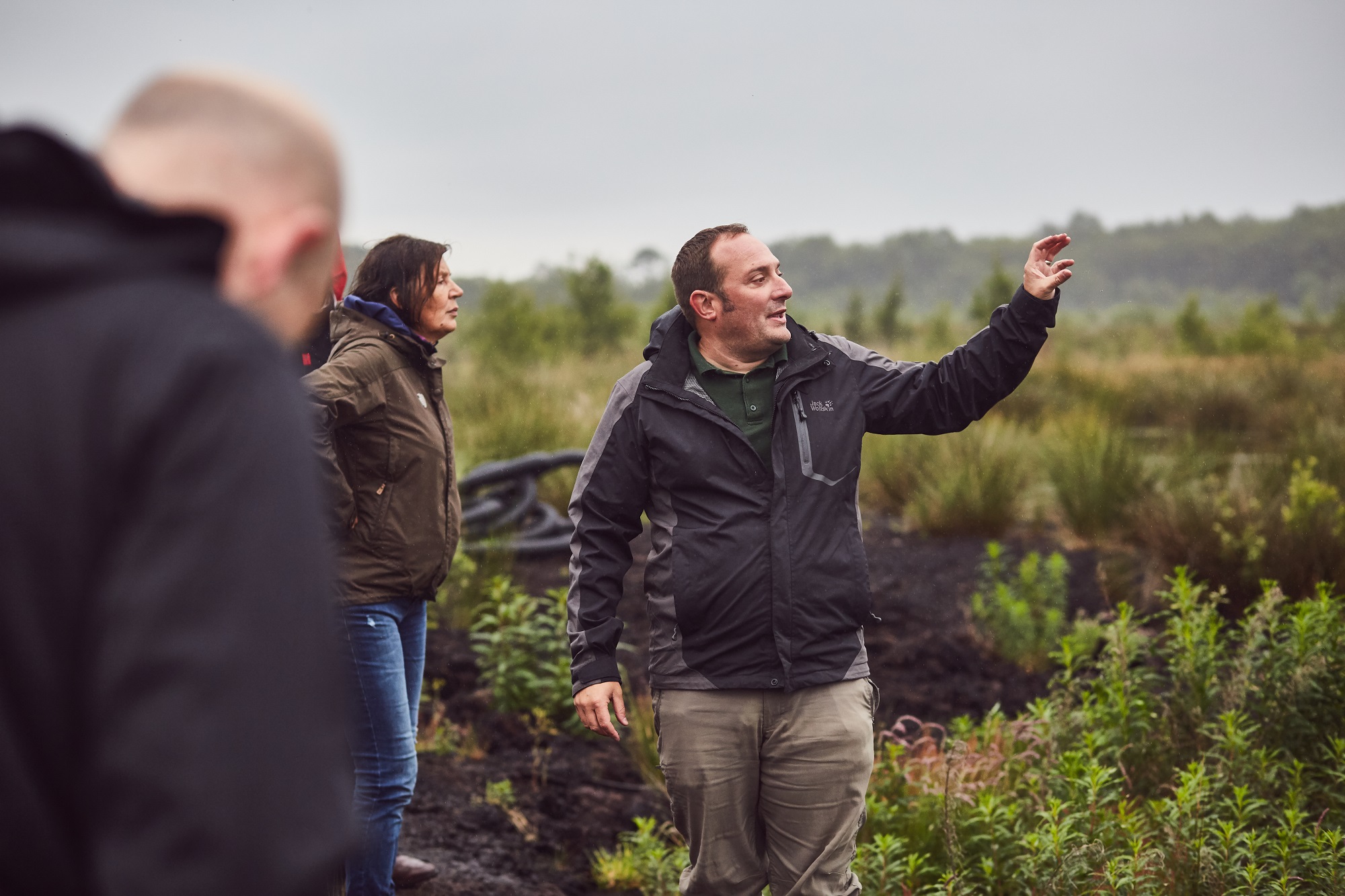Care-Peat has kicked off! June 12th we organised our start conference in Manchester, United Kingdom. It was a successful and inspiring day. We were happy to meet other organisations, stakeholders and future partners. And we hope to meet again soon!
> Watch all the presentations below
> Watch more photos taken at the conference
Following a warm welcome from hosts Chris Field and Simon Caporn of Manchester Metropolitan University (MMU), the conference heard from Katrien Wijns of the project lead organisation Natuurpunt of Belgium who described the overall project operation and the key role of the five pilot peatland restoration sites where trials will demonstrate peatland restoration methods in order to maximise carbon sequestration. Katrien explained “the project is ambitious and will work with innovative companies in the field of restoration and develops partnerships with local and regional stakeholders to increase the impact of pilots and maximize socio-economic benefits.”
Pilot sites within Care-Peat
Partners from the pilot sites introduced their plans. At Little Woolden Moss, a pilot site close to Manchester, Jo Kennedy of Lancashire Wildlife Trust (LWT) spoke of plans to restore bog vegetation to bare peatland following harvesting and also convert grazing farm-land nearby to Sphagnum following re-wetting. Restoration of bog vegetation on drained extracted peatland is also a major challenge over large areas of damaged bog in Ireland and this is the target for a team led by Terry Morley of Galway University (NUIG) who will focus work at Cloncrow Bog in central Ireland. In France, Fatima Laggoun-Défarge of the University of Orleans talked of their plans to scale-up earlier successful methods of Sphagnum introduction into Molinia-dominated vegetation at La Guette peatland. In the Netherlands, Wiebe Borren from Natuurmonumenten described how they would create peat pits at the Dutch nature reserve De Wieden and within them grow aquatic mire vegetation to generate net carbon sinks. The fifth regional pilot site is Vallei van de Zwarte Beek, a large nature reserve in Flanders. Here Chris Dictus from Natuurpunt talked of their plans to re-wet and restore mire vegetation and carbon sequestering function on a large scale.
Sharing knowledge and best practices
The large variety of sites and techniques across the Care-Peat project offer a snapshot of the types of peatland restoration work going on in the region and across Europe. Sometimes projects work in isolation without learning the good and bad practice from others teams working in other areas or countries. The key is to create better communication and Care-Peat partner Jelke Brandehof, from the nature organisation Eurosite, described how they will bring together non-governmental as well as governmental organisations, practitioners, policy makers and scientists from across Europe to achieve peatland restoration and carbon management through sharing the benefits of knowledge and best practice.
Peatlands and climate change
In order to promote collaboration with other European peatland restoration programmes, the Care-Peat team invited other projects to make presentations at the conference and several speakers from across the region helped set the Care-Peat project in this wider perspective. Jan Peters of the University of Greifswald, although grounded by a cancelled flight, gave us an excellent Skype presentation and told the audience of the extensive problems caused by drainage of organic soils, not only for the global net carbon balance and the ambitions of the Paris 2015 agreement, but other serious issues like increased subsidence and peatland fires. As Jan said “rewetting solves most of the problems, but we cannot flood all 500,000 km2 of drained peatland worldwide and take them out of production. We must solve the drainage problem while maintaining production – with paludiculture” Similar themes were expressed by speakers from other research projects. From the Interreg-North Sea Canape project Harry Mach showed how their project was restoring and creating peatlands and exploring the viability of paludiculture crops to achieve “better management of peat in the wetland ecosystems of the North Sea Area”. From the EU-Life Peat-Restore project, Leticia Jurema spoke of the variety of peatland restoration underway at sites in northern Germany, Poland and the Baltic states and the use of a combination of greenhouse gas flux measurements and proxy values based on vegetation types (GEST) to estimate the effects of mire vegetation restoration on carbon balance.
Peatland Code: financing peatland restoration
The long-term aim of Care-Peat and similar projects is to demonstrate the carbon-saving benefits and the economic feasibility of peatland restoration and it may well be the latter aspect which holds up landscape scale re-wetting and restoration. In the UK, the Peatland Code scheme has been developed to finance peatland restoration through a ‘payment for ecosystem services’ scheme. In the final talk of the morning, Jillian Hoy of the IUCN UK Peatland Programme described how the Peatland Code “is a voluntary standard for UK peatland projects wishing to market the climate benefit of peatland restoration. Independent validation and verification to this standard provides assurance and clarity for buyers with regards the quantity and quality of emissions reductions purchased”.
Workshops
The Care-Peat project includes several academic knowledge partners who provide essential scientific underpinning in the planning, monitoring and analysis of the benefits of site management for peatland carbon balance. In the afternoon workshops, led by representatives of these knowledge-partner institutions, delegates enjoyed the chance to network and share ideas about different subject areas within the project. A vital part of Care-Peat is the measurement and validation of the carbon rewards expected to result from the restoration works across the pilot sites. The knowledge institutes will together develop an integrated measurement method of carbon fluxes by using ground, drone and satellite measurements. In the first workshop, Sebastien Gogo (University of Orleans) helped by Laurent Andre (French Geological Survey) and Andreas Heinemeyer (University of York) led a lively discussion on greenhouse gas measuring methods, monitoring and modelling. In the future, remote methods will no doubt play a greater role in monitoring peatland condition and restoration, and in the second workshop Chris Field (MMU) and Terry Morley (NUIG) led a discussion on taking advantage of Earth Observation techniques and the new opportunities provided by drone technology. They discussed the possibility of standard protocols that could be adopted in order to co-ordinate the use of EO methods in peatland restoration. Niall O'Brolchain (NUIG) and Jillian Hoy (IUCN) asked their workshop to consider socio-economic model strategies and schemes such as the Peatland Code currently being tested in the UK, that could give landowners incentives to restore peatlands, while the theme of the final workshop guided by Simon Caporn (MMU) and Mike Longden (LWT) was about how to foster communication and sharing of best practice to make the most gains from peatland restoration.
Peatland restoration as a marathon
In the last indoor presentation of the day, Dave Chandler, the science manager at the nearby Moors for the Future who run the EU-Moorlife 2020 project in the English Peak District national Park, talked of the need to take the long term view in restoration projects. As Dave said “peatland restoration is a marathon not a sprint” and showed how their project’s success since its start in 2003 is based on strong and vibrant co-operation with a diverse range of organisations from non-governmental conservation organisations to land-owners, end-users and government departments.
Field trip to Little Woolden Moss pilot site
A post-conference field trip led by Martyn Walker and Mike Longden (LWT) visited the Lancashire Wildlife Trust site at Little Woolden Moss to the west of Manchester. This site is part of a once-large peatland area between Manchester and Liverpool much of which is now drained, farmed, built-on or extracted. However, Will Horsfall of Salford City Council told visitors that the remaining good conservation area peatlands provide valuable wildlife habitats on the edge of the Manchester and Salford city conurbations and emphasized that the Care-Peat project plans at this site fit well with the ambition for Greater Manchester to be carbon zero by 2038.




